(2PM EST – promoted by Nightprowlkitty)
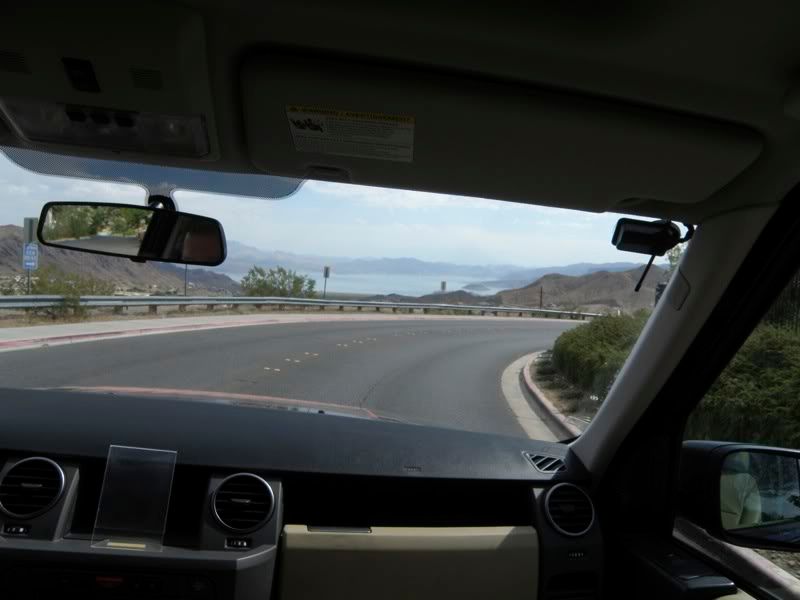 Approach |
When I grew up, we almost always referred to the dam as Boulder Dam, rather than Hoover Dam. Maybe that had to do with the fact that I grew up in a democratic, union household.
Actually, it shouldn’t be the Boulder Dam either. While Boulder Canyon was the original site selected, it turned out there was a geologic fault right down the middle of that canyon, so they kept looking until settling on Black Canyon.
This is a continuation of a series of photo-journals of things to see near Las Vegas.
Next up will be Red Rock Canyon.
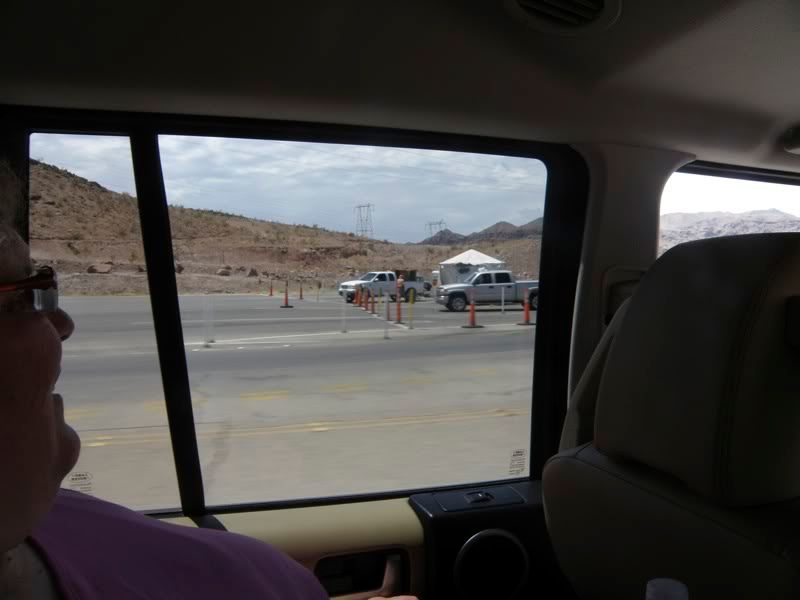 Checkpoint |
We drove through Boulder City, past the Hacienda Hotel and Casino, though a homeland security checkpoint, and eventually arrived at the dam site. Since neither our bags were searched nor were we asked any questions at the homeland security checkpoint, other than how we were doing, I really wondered at the purpose of the site. Perhaps if we had been either armed to the teeth or looked Muslim…
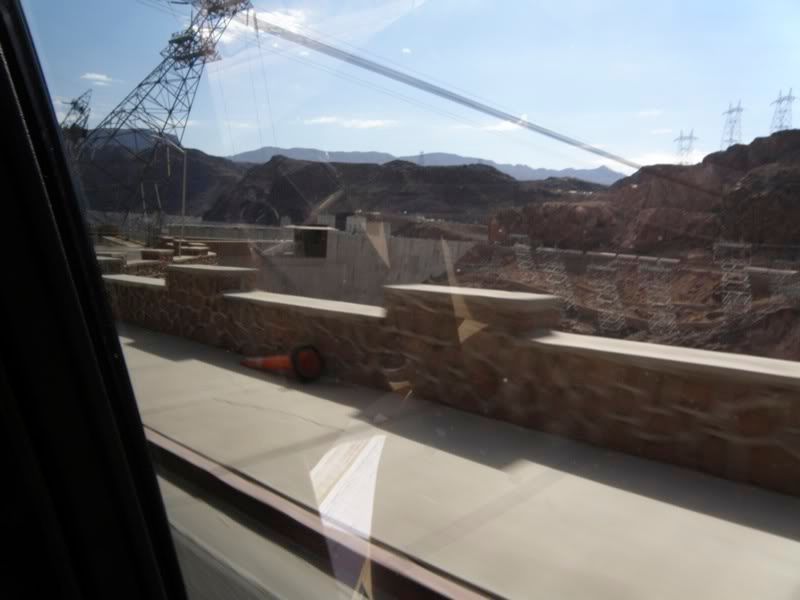 Approach 2 |
Eventually you round a bend in the road and are actually at the dam, which you can drive across if you wish…at least for now. There are plans to restrict driving on the road across the dam, in the interest of extending the life of the dam. Personally, I wondered at how many years car and truck traffic could possibly be taking off the life span of the dam, but kept my own counsel.
For construction enthusiasts, I have a couple of blueprints. As with all the graphics, clicking on them will open a larger version.
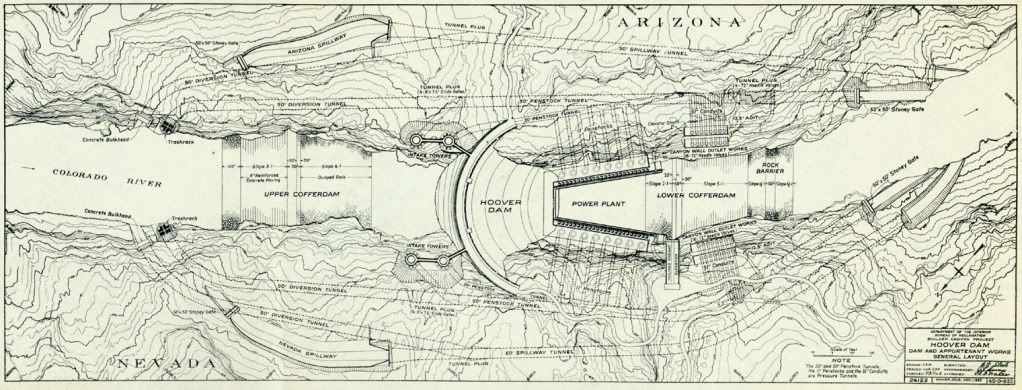 Contour Map |
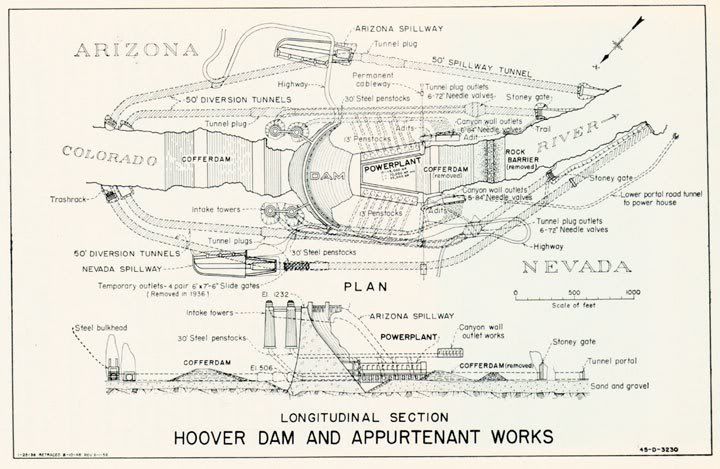 Plans |
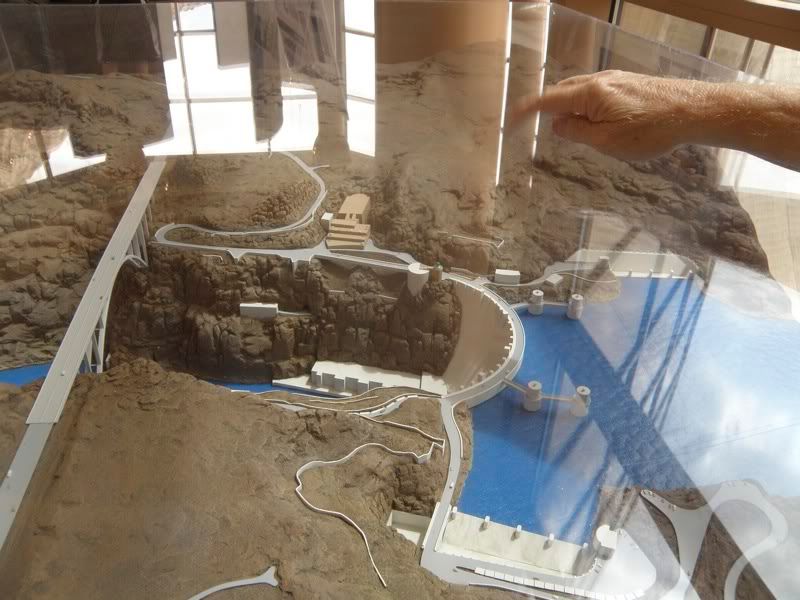 Model |
If you are a more visual person, you might prefer the model, which you can see in the observation turret that you might access at the end of the tour, should you decide to take it.
The tour consists of watching what amounts to a propaganda video, standing in line several times, taking an elevator ride down into the bowels of the dam (where it is quite cool…much welcome if the surface temp is high), where a guide will point out some features, like the turbines. There are 17 turbines at present: 9 on the Arizona side and 8 on the Nevada side.
I also have a photo from the Overlook in Arizona:
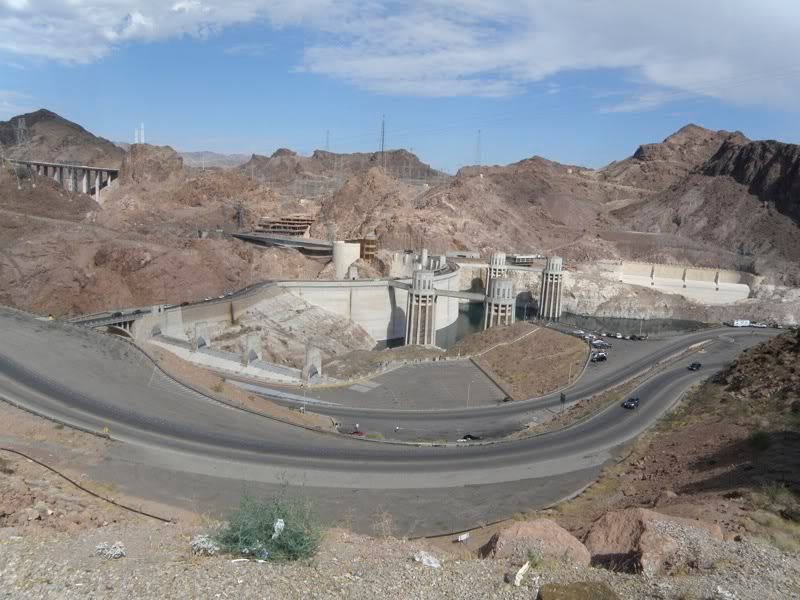 Overlook View |
The vertical tower-like structures visible are the intake valves, where the water is gravity fed and pumped to the turbines:
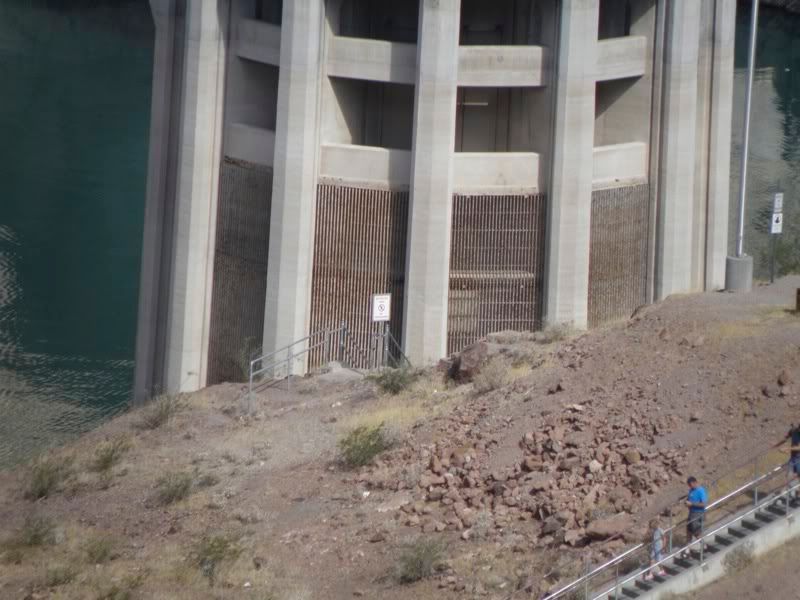 AZ Intake |
 NV Intake |
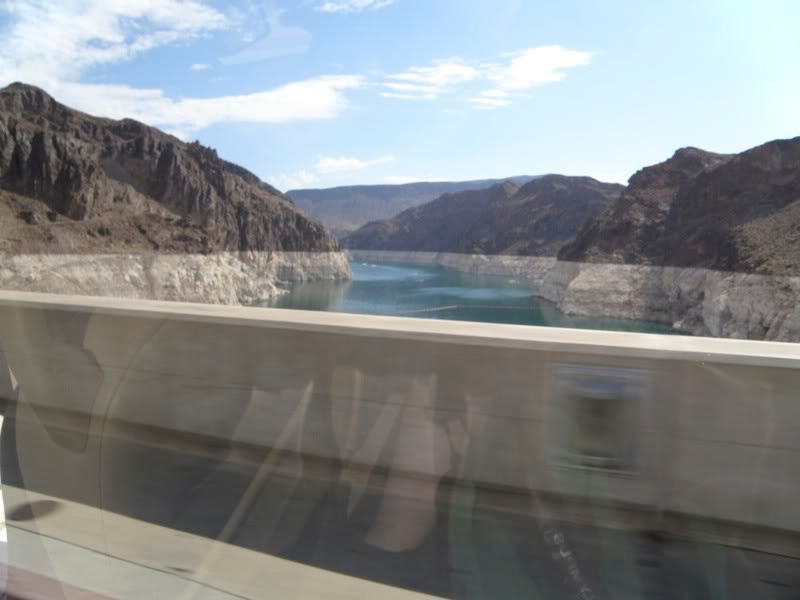 Lake Mead |
The white line in this photo is not on artifact of my poor camera management (although the reflection is), but rather indicates how high the water has been…which is 6 feet from the top of the dam, which it was the only time it was decided to open the spillways, which I did not get good shots of. There is a spillway in each state.
Water going over the top of the dam would not be a good thing. Neither is it a good thing for the water level to be as far down as it is now (75-100 feet). Apparently it has been quite dry in the upper Colorado River basin.
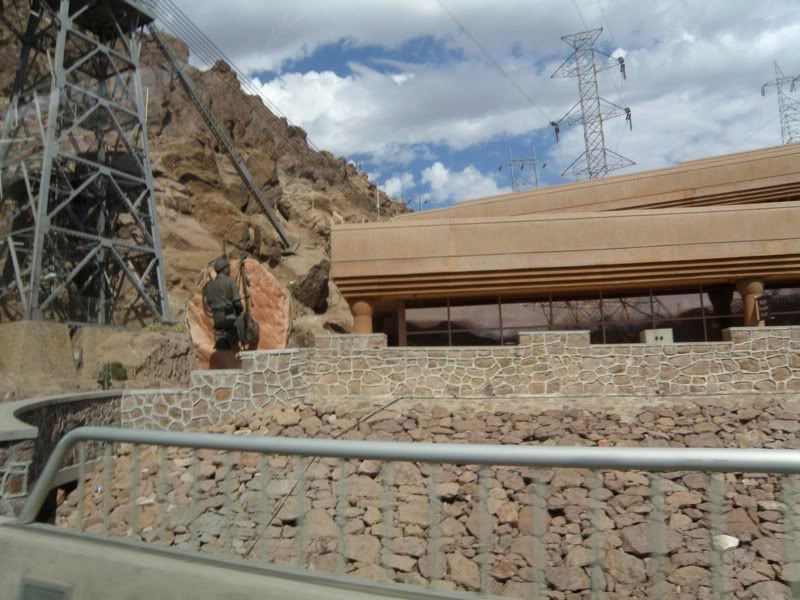 Gift Shop and Statue |
On the Nevada side of the canyon is a gift and food shop, as well as a parking structure. There is also some statuary. There is plenty of art work around the area. I’ll add that to the story a bit later.
Not that the entire structure isn’t a work of art in and of itself.
So on with the tour. Yes, those are real palm trees to the left in the picture below:
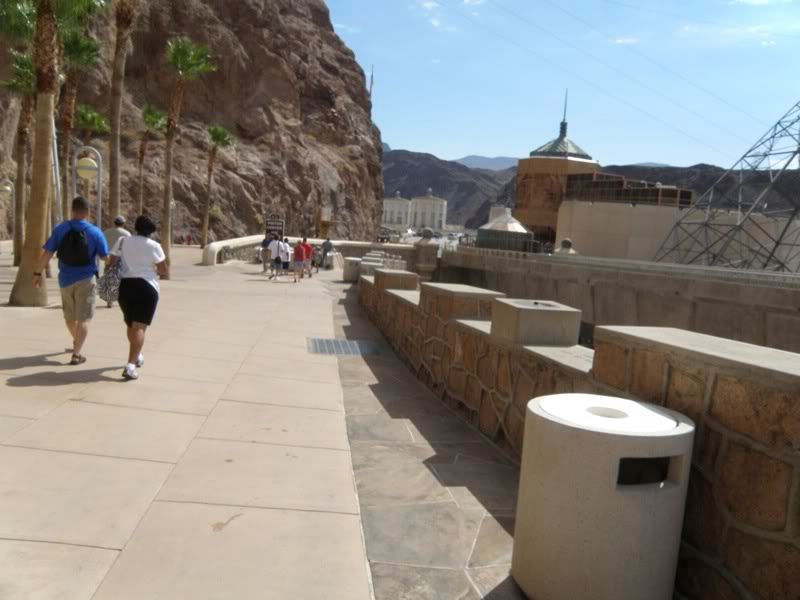 Entrance to Tour |
While we waited for the tour to start, I noticed this plant, hanging on for dear life, seemingly growing out of solid rock.
 Tough Plant |
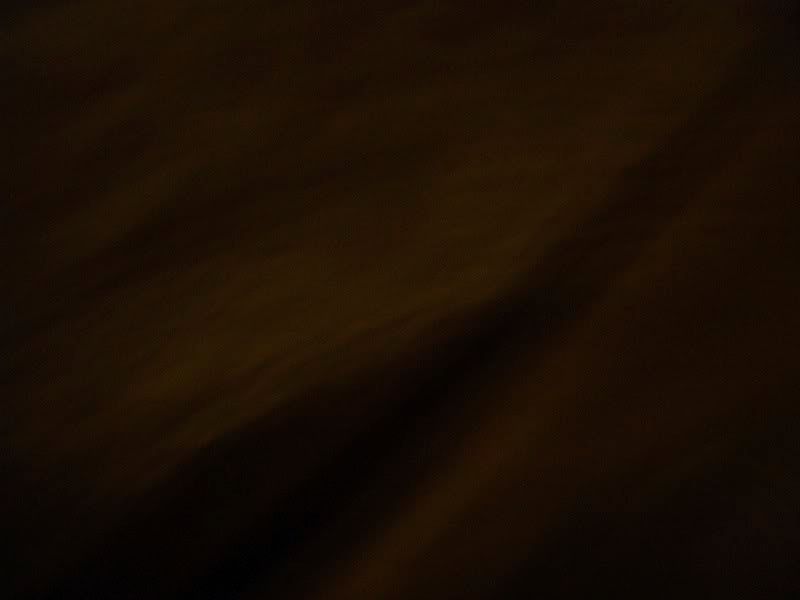 Cave Wall |
After watching the video, we were divided into two parts: some who had yellow plastic hats were in what was called the “hard hat group”. Interesting story: the hard hat was invented during the construction of the dam. The high scalers, who swung on ropes along the cliffs and across the canyon, needed protection from falling objects (tools, rocks, other workers… yep, in one case a supervisor who fell off the top was caught out of the air by a high scaler), so they would soak there hats in tar. Being hit on the head by an object while wearing such a hat might cause a broken jaw, but with no skull injury. The construction company ordered a bunch of like objects to be made and encouraged all the workers to wear them. Thus, the hard hat was born, although it has become much more refined in the modern day. They now offer much more protection and you can even get things like a Hard Hat Light to make your life easier when working in the dark. I wonder if those workers, who dipped their hats in tar, knew what they’d created?
 Star Trek Bridge? |
I’m willing to believe that the original inventors earned not a penny from their invention.
The elevator descends rapidly…ear popping speed…to near the bottom of the dam…where you can debark and wait in line again…perhaps take a picture of a wall or something.
Eventually everyone is ushered into a visitors level and given a short lecture by a guide. I can’t be the only person who had an eerie feeling of déjà vu when I saw the exhibit to the left.
Put on your goggles before we go see the dilithium crystals!
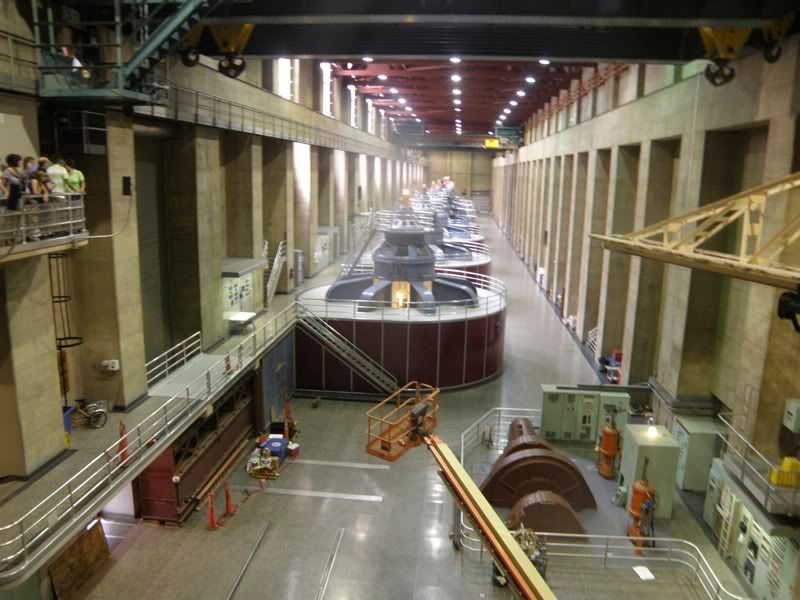 The Nevada Turbines |
Up one floor via elevator, we again disembarked into the power generation area. At the lower right, half sunken into the floor, is an additional turbine, which is used to generate the power at the the dam site (lights, air conditioning, elevators, etc).
At the end of this portion of the tour, the hard hat group left us, presumably for a ground floor tour. the rest of us were coaxed back into the elevator and taken to the top.
 Close-up of Turbine |
Before I left the turbine area, I grabbed this shot of the floor.
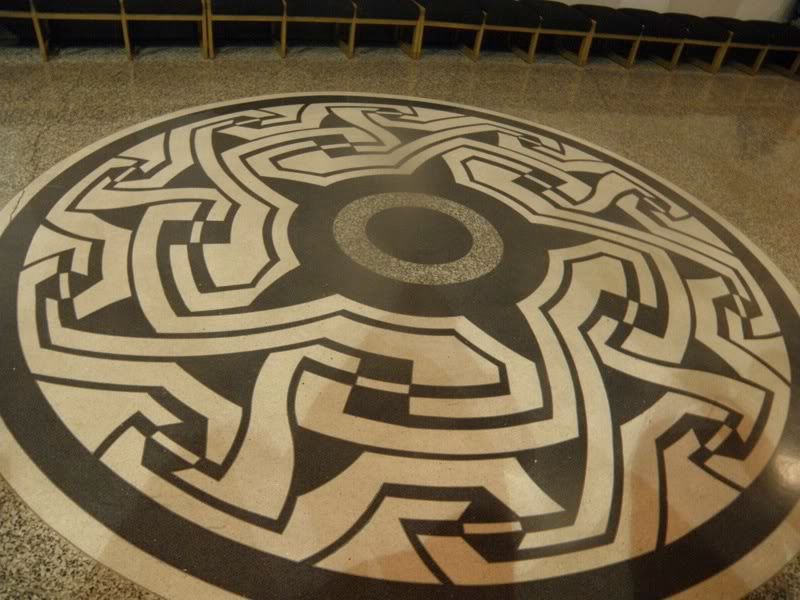 Art Deco |
Originally, the dam was adorned with Gothic-style balustrades and eagles, which classed with the modernity of an arch dam. Los Angeles architect Gordon Kaufmann was brought in to redesign the exteriors. He chose to do everything in an art deco style. Kaufmann hired Denver artist Allen Tupper True to do the floors and walls. The government, wanting to get its money’s worth, also had True do the same for the following dams: Grand Coulee, Bonneville, Shasta, Friant and Minidoka.
Probably according to True:
True’s design scheme incorporated motifs of the Navajo and Pueblo tribes of the region.
From time to time the water tries to break through the rock. Calcium carbonate forms to block these seepages.
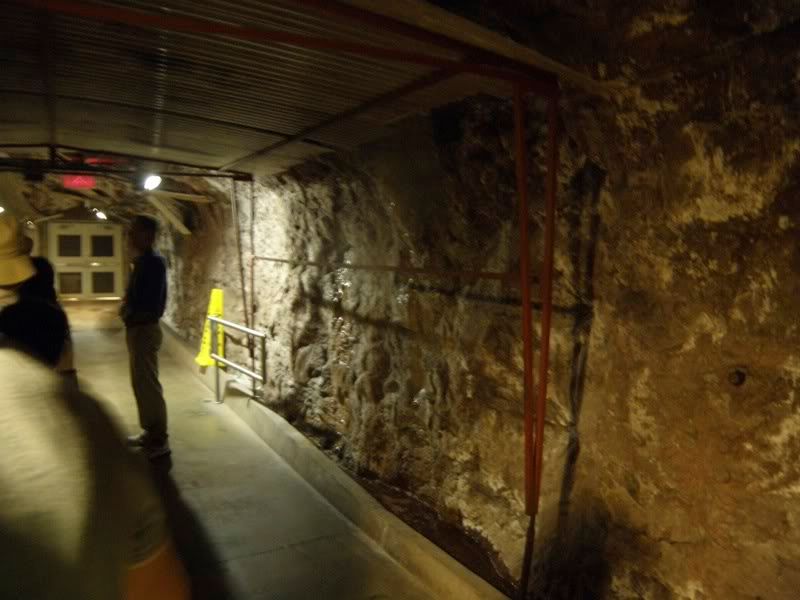 Seepage |
On to photos of the dam proper…from the outside:
 The Bottom, with the Arizona turbine building |
The dam is 660 feet wide (front to back) at the base.
 The Middle |
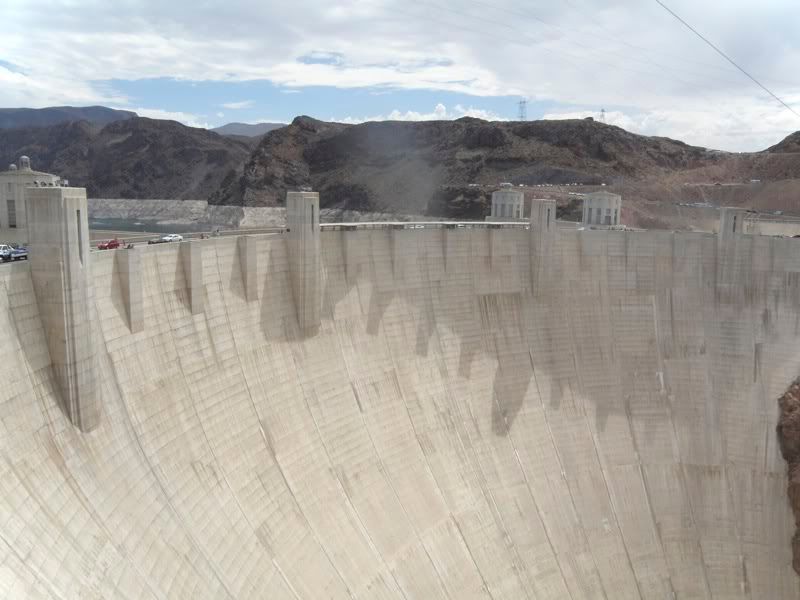 The Top |
The dam is 45 feet wide at the top.
 Downstream |
And, of course, the dam needs to be tied into the power grid. Most of the power goes to Los Angeles.
 Power |
Time out for photos of your intrepid travelers:
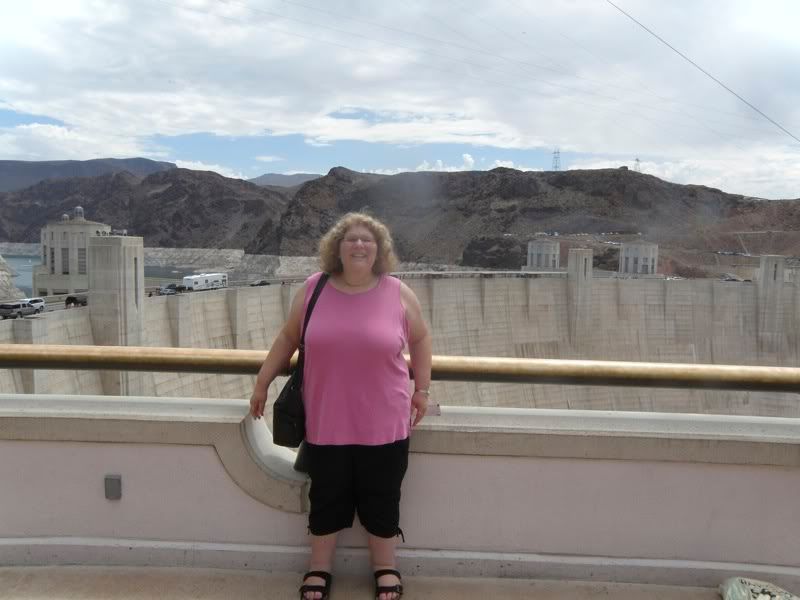 Debbie |
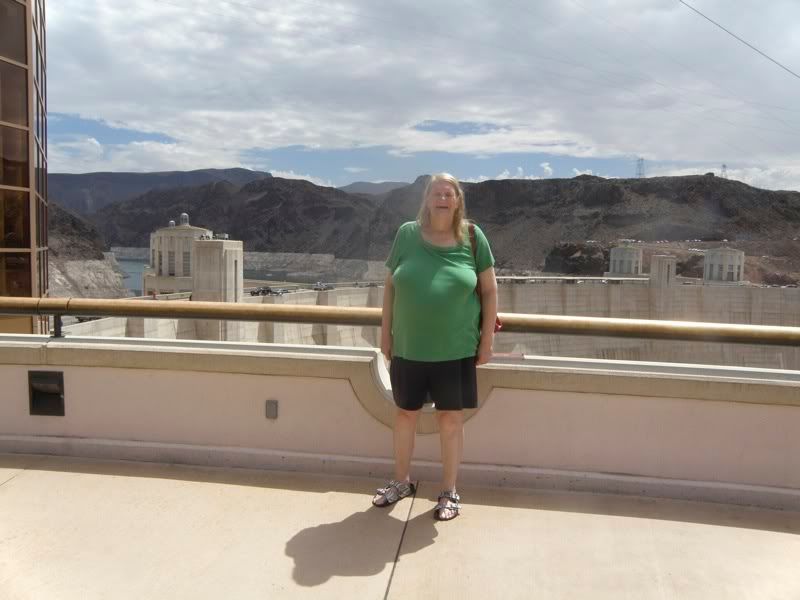 Robyn |
The elevator towers are adorned with bas relief. I’m sorry I didn’t get shots of those, but I got some shots of other bas relief in the observation room. They are highly engaged in propaganda.
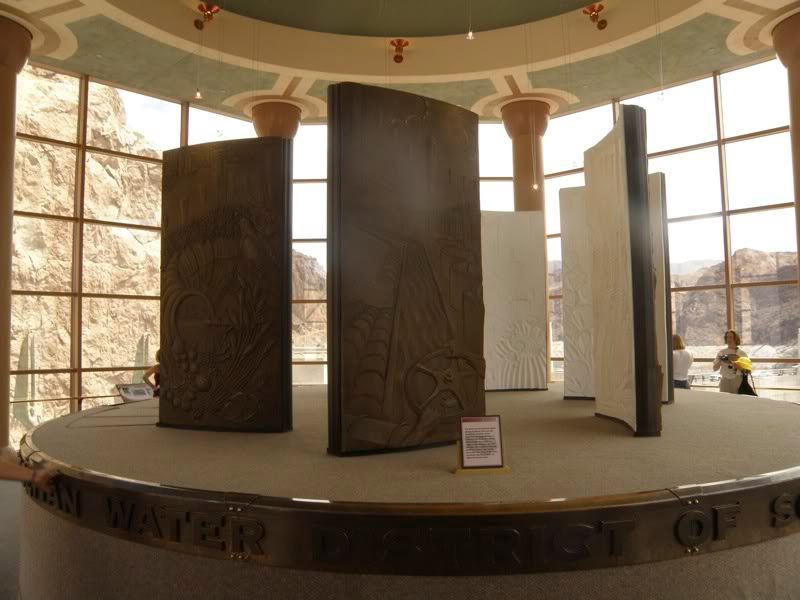 Statuary |
Here are the six individual pieces in this set. The names I have given them are not their true names.
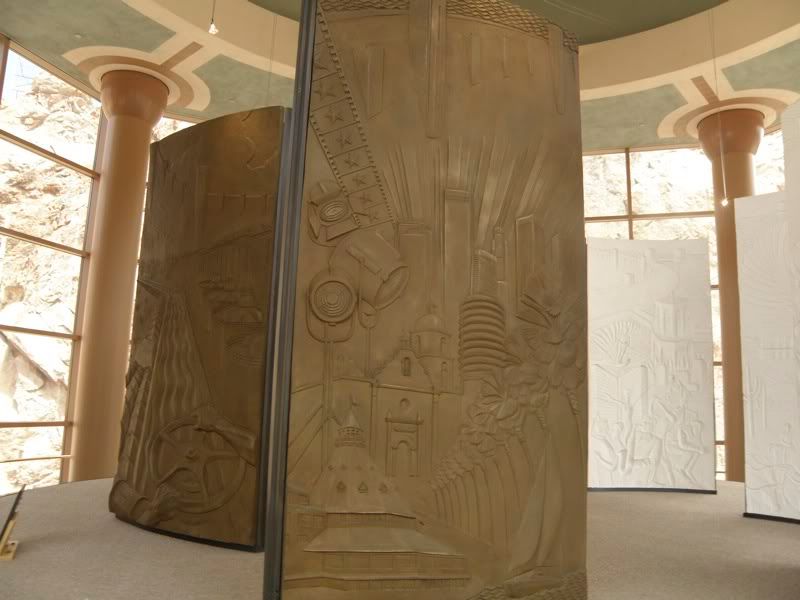 Lights, Camera, Action |
 Man Conquering Nature |
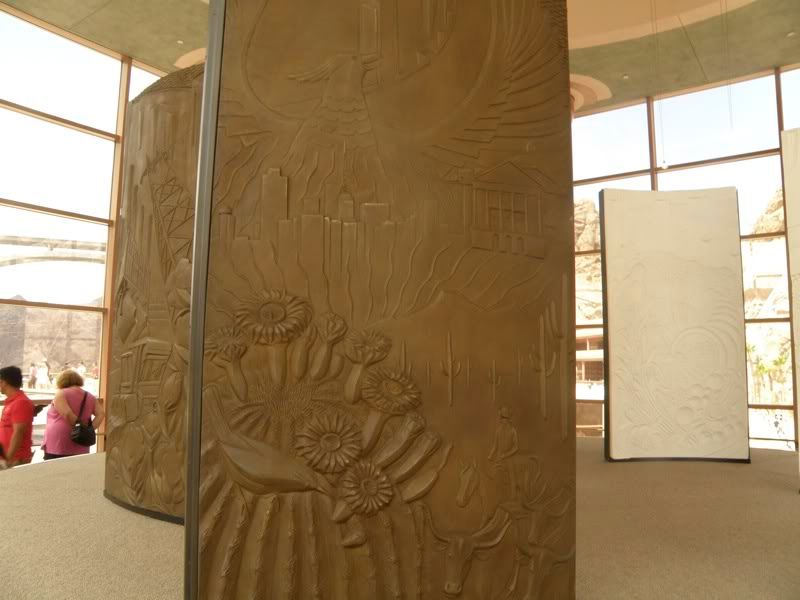 Owning the Desert |
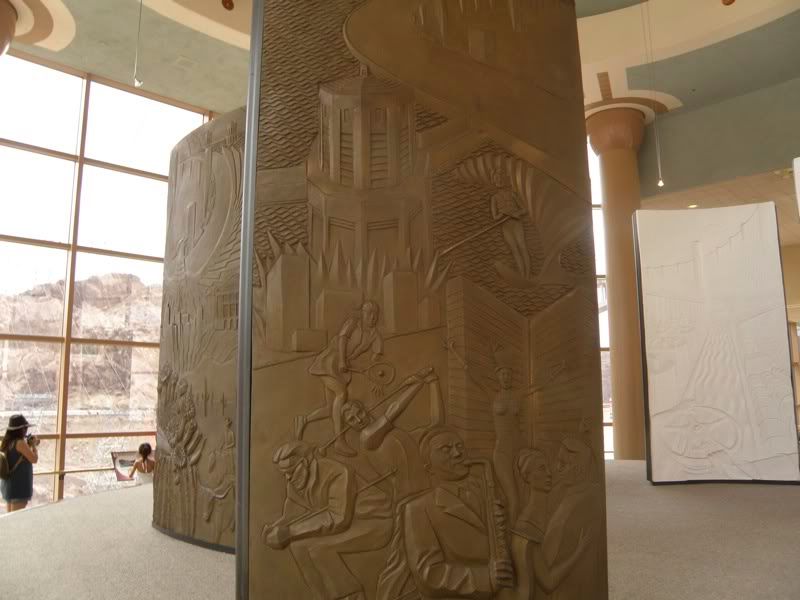 Bringing Nightlife to the Desert |
 Bringing Life to the Desert |
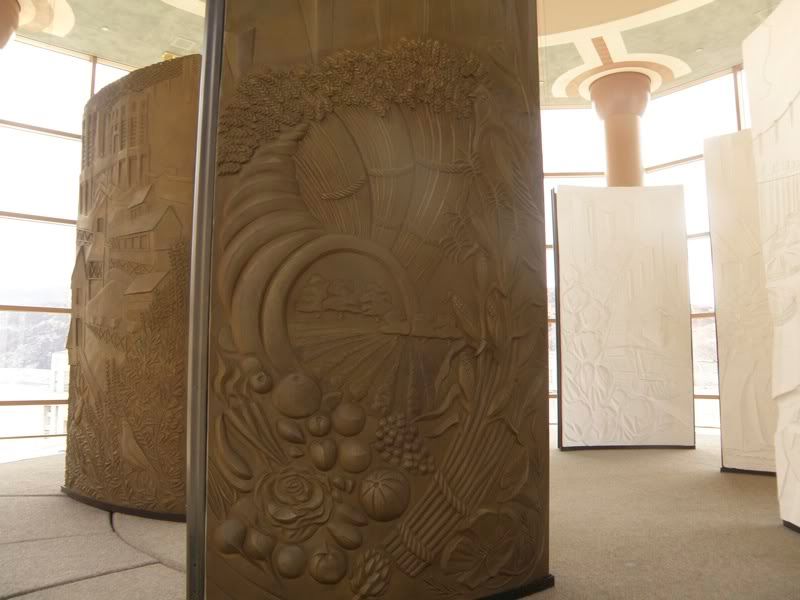 Reaping Bounty from the Desert |
These are not used on the facade of the elevator, work by Oskar J. W. Hansen which rather depict the “benefits” of the dam:
flood control, navigation, irrigation, water storage, and power.
The Arizona side depicts “the visages of those Indian tribes who have inhabited mountains and plains from ages distant.” The following words are included:,
Since primordial times, American Indian tribes and Nations lifted their hands to the Great Spirit from these ranges and plains. We now with them in peace buildeth again a Nation.
Hansen also created the following monstrosity:
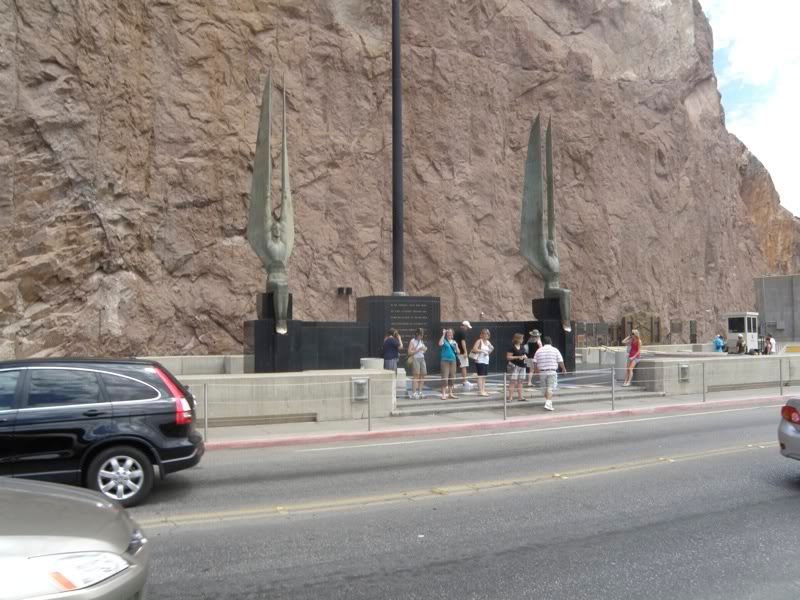 Wings of the Republic |
Since he knew, at the time, that when visitors from outer space arrived, they would visit the site of the dam, he decided to give them assistance by displaying a map of the stars at the time the dam was built.
 Star Map |
…and the signs of the zodiac:
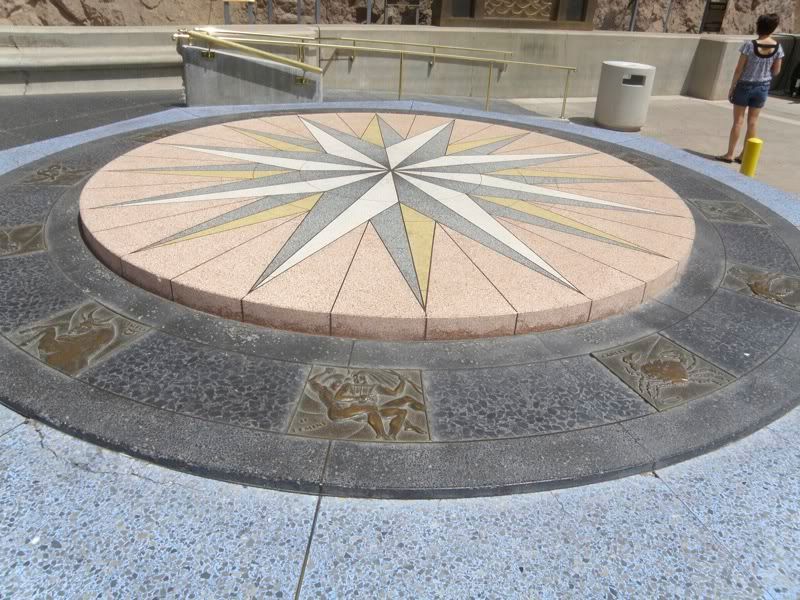 Zodiac |
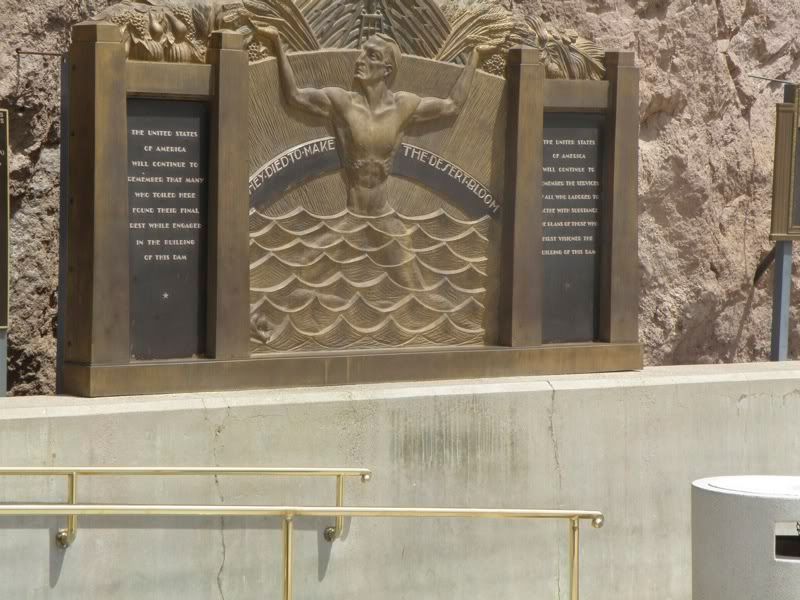 They Died to Make the Desert Bloom |
A little more seriously, he sculpted a memorial to the 112 people who died during the construction of the dam. Sixteen died from heat prostration during the first year of construction. Odd coincidence: The first person to die was J. G. Tierney, a surveyor. He drowned on December 20, 1922, falling off the boat while they were looking for the ideal spot to build the dam. The last to die was his son, Patrick W. Tierney, who died 13 years to the day later, December 20, 1935, when he fell off one of the intake valves.
The inscription arcing across is what I have labeled under the photo.
Rubbing the toes of the wings of the Republic is supposed to bring good luck.
 Foot Rub |
 The Mascot |
There was one additional death of note, the dog who belonged to no one and everyone.
The Hoover Dam construction crew’s mascot was found as a puppy by workers at the construction camp. This dog travelled to and from the damsite with them and spent his days visiting the many work sites. On February 32, 1941 the life of this devoted animal came to an end when a truck under which he was sleeping rolled over him. This grave marker was completed by workers later that same day.
One more statue. Behind it you can see the new bridge that is being constructed.
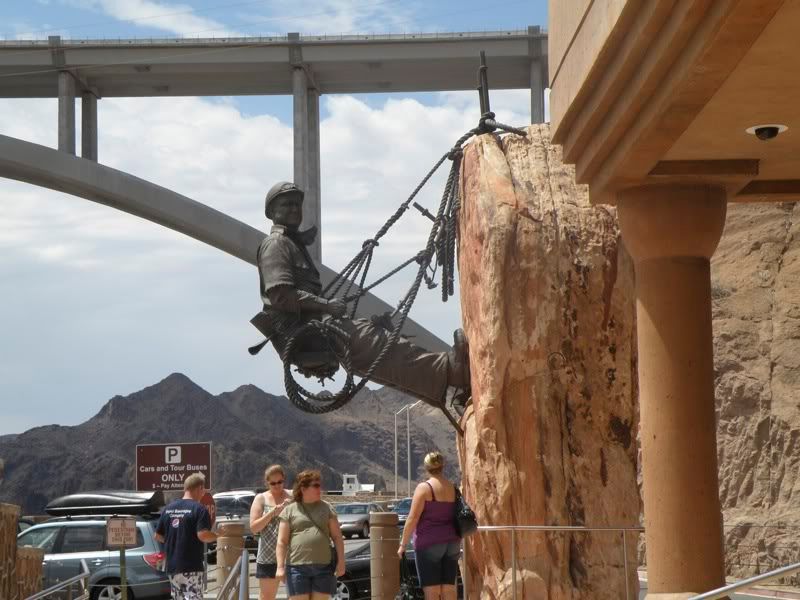 The High Scaler |
But for Art Deco aficionados, such as myself, I include the following.
 Deco |
 Deco 2 |
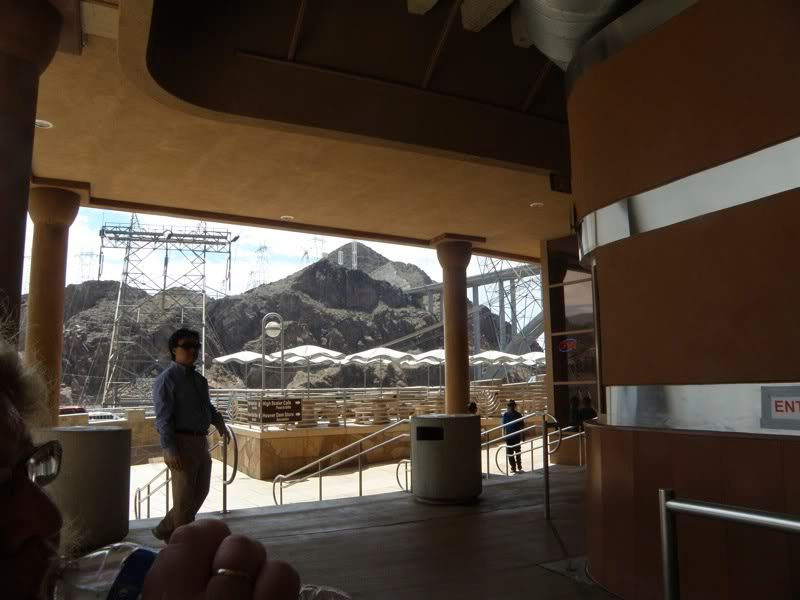 Deco 3 |
I know it is long. I hope you found it worthwhile.

2 comments
Author
Author
…over at the Orange.